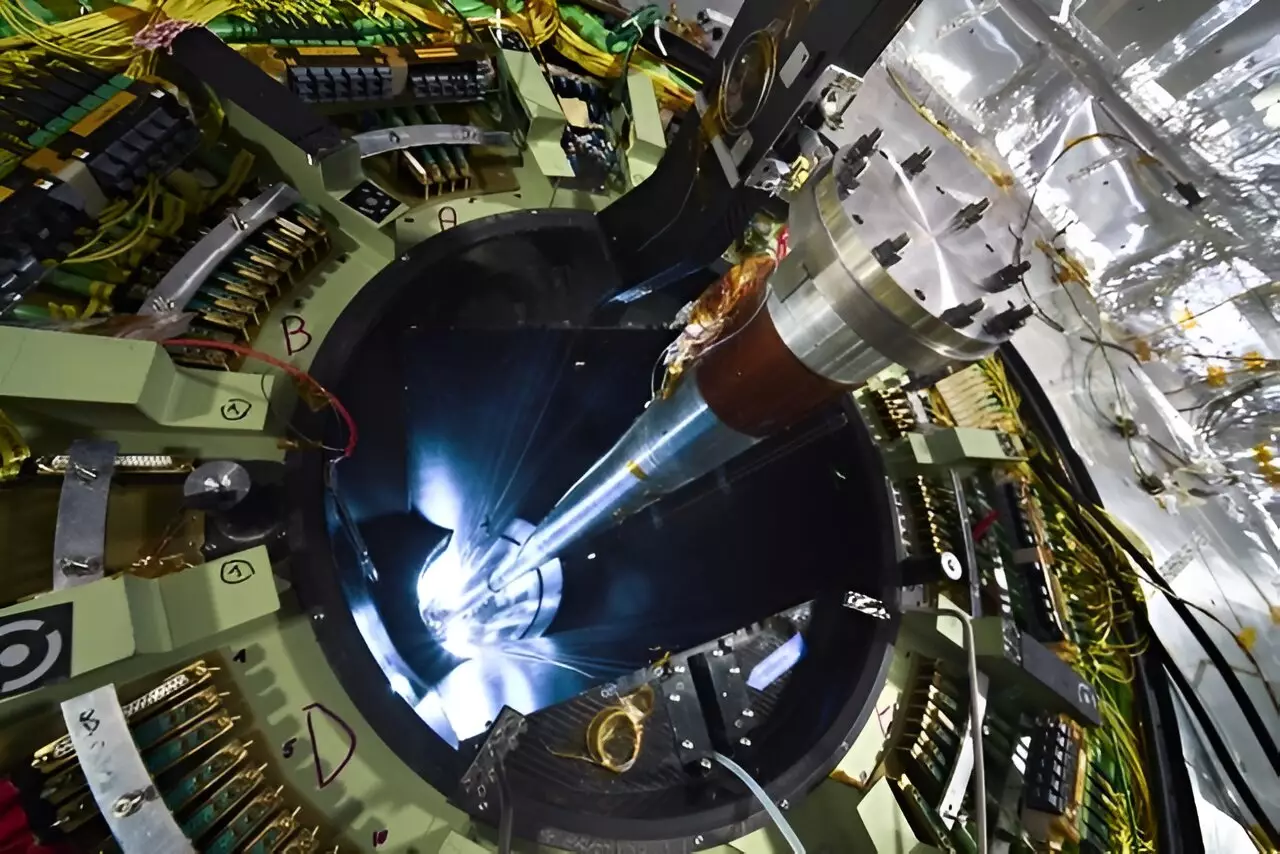In the realm of theoretical physics, few subjects captivate the imagination as much as magnetic monopoles. These hypothetical particles represent a radical departure from conventional understanding, positing the existence of isolated magnetic poles—either north or south—without their counterparts. This enigmatic concept has been a driving force behind many inquiries into the fundamental nature of particles. Recent research from a team at the University of Nottingham, in collaboration with an international consortium, has employed a decommissioned section of the beam pipe from CERN’s Large Hadron Collider (LHC) to refine the search for these elusive entities. Published in *Physical Review Letters*, the findings provide significant advancements and constraints on the potential existence of magnetic monopoles.
Led by Oliver Gould, a key theorist and Dorothy Hodgkin Fellow at the University of Nottingham, the study builds upon the foundational ideas put forth by renowned physicists like Paul Dirac. Despite extensive experimental efforts yielding no conclusive findings to date, the quest for validating the existence of magnetic monopoles continues to ignite scientific curiosity. Gould articulates the significance of this research, focusing on the tantalizing prospect that these particles could revolutionize our understanding of physics if found. The motivation behind the exploration is not simply academic; it encompasses a deep desire to answer one of the lingering questions in particle physics.
The research team’s strategy centers on leveraging a section of a beryllium beam pipe—historically put to use in the LHC—emphasizing its unique proximity to high-energy collisions that generate ultra-strong magnetic fields. Conducted by physicists involved in the Monopole and Exotics Detector at the LHC (MoEDAL) experiment, the work scrutinized how these charged collisions might create monopoles through mechanisms such as the Schwinger effect. By doing so, the scientists sought to capitalize on the radiation exposure the pipe had undergone from countless ion collisions, hypothesizing that any potential monopoles would be trapped within its material.
In a quest that merges both theory and experimental physics, the MoEDAL collaboration deployed advanced measurement techniques, specifically using a superconductive magnetometer, to detect possible signs of magnetic charges trapped within the pipe. Although the results yielded no direct evidence of monopoles, they established critical upper limits on the mass of these particles, effectively ruling out monopoles with masses lighter than 80 GeV/c². Furthermore, they crafted pioneering constraints regarding the magnetic charges, presenting the most stringent bounds recorded thus far, spanning from two to 45 base units.
This meticulous research highlights a significant leap forward, showcasing how even materials destined for disposal can become pivotal in groundbreaking scientific endeavors. Despite the lack of tangible findings, the results consolidate the search for magnetic monopoles and pave the way for future explorations in this mysterious territory.
Looking ahead, the research team envisions extending their searches, utilizing insights from both earlier and more recent experimental runs at the LHC. The expectation that subsequent investigations could enhance experimental reach significantly underscores the unwavering momentum in monopole research. As Oliver Gould notes, the prospect of trials at higher energies stands to open up further avenues for discovery, potentially doubling the sensitivity to detect these elusive particles.
The search for magnetic monopoles encapsulates the broader human quest for knowledge, pushing the boundaries of what we understand about the universe. Researchers at the University of Nottingham have made meaningful advancements, shining a light on a potential breakthrough in particle physics. While the existence of magnetic monopoles remains unproven, the rigorous methodology used in the recent LHC study and the prospects for future inquiry ensure that the intrigue surrounding these particles will continue to captivate scientists and enthusiasts alike. As research progresses, one can only speculate about the revelations that may lie ahead, promising to transform our understanding of fundamental physics.

